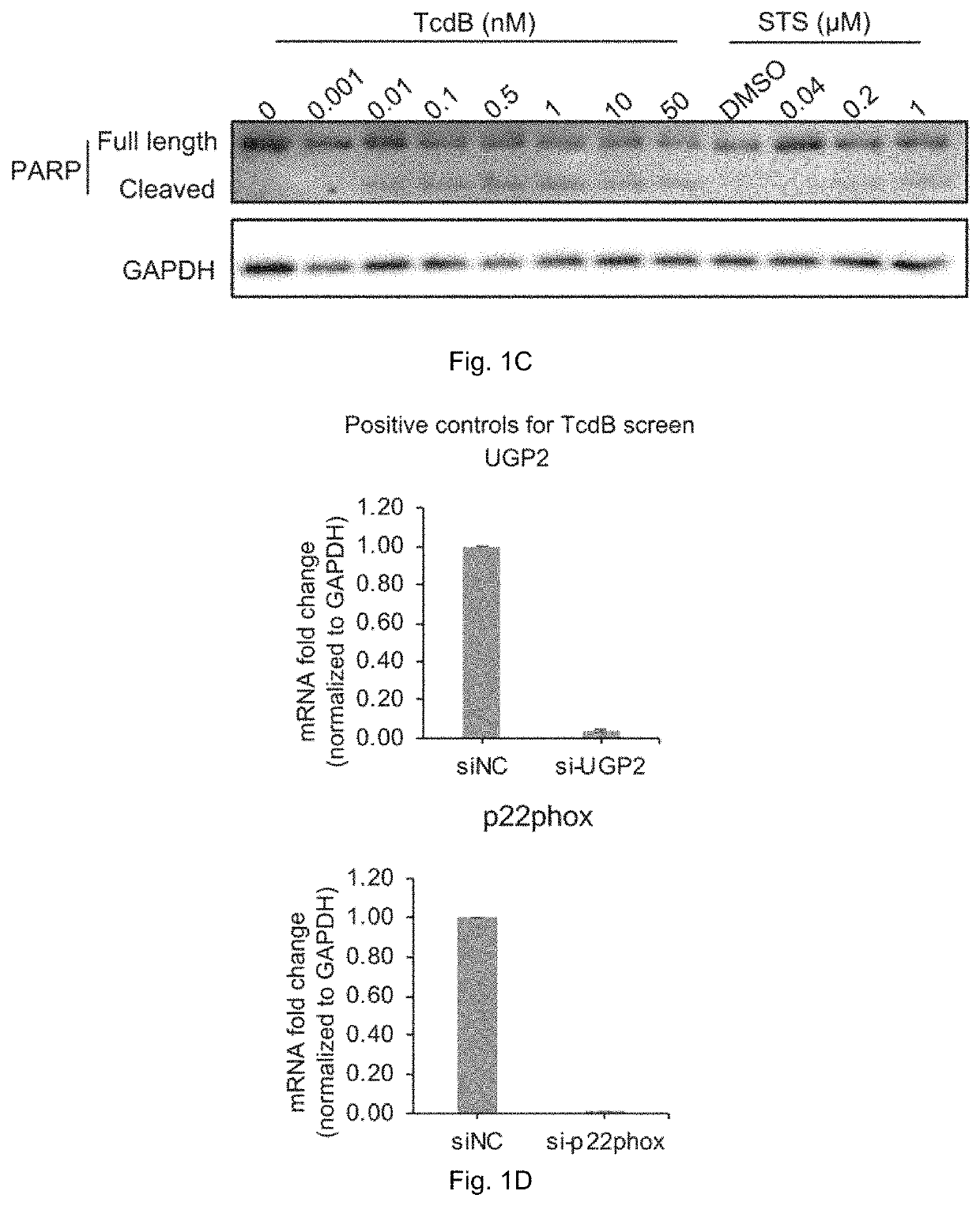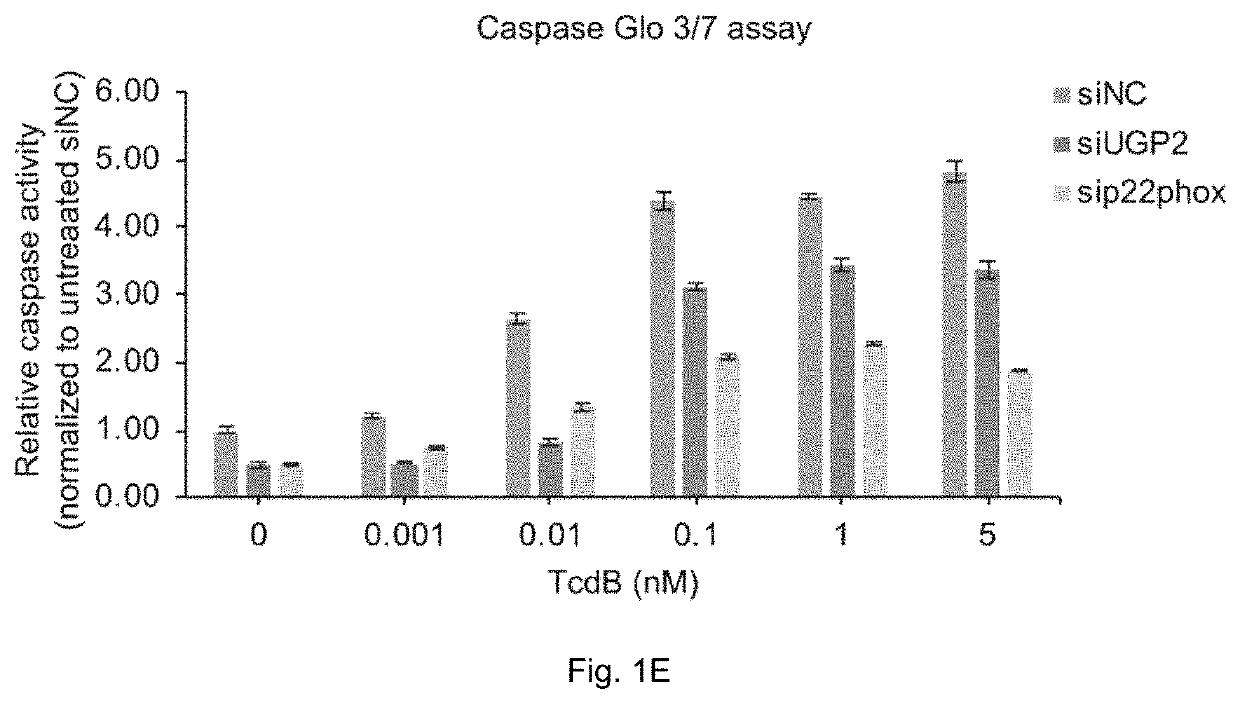Method of treating Clostridium difficile infection or its associated symptoms
a technology of clostridium difficile and clostridium difficile, which is applied in the field of treating clostridium difficile infection or its associated symptoms, can solve the problems of limited effective treatment options, high virulence strains of i>c. difficile /i>bi/nap1/027 poses a significant threat to public health, and high recurrence rate, so as to reduce caspase activation, prolong the effect of tcd
- Summary
- Abstract
- Description
- Claims
- Application Information
AI Technical Summary
Benefits of technology
Problems solved by technology
Method used
Image
Examples
examples
[0054]The inventors determined the host factors of TcdB via screenings and test, and unexpectedly found that HMGB1 has an important role in TcdB induced apoptosis and cell damage. Subsequently, a HMGB1 inhibitor was used to determine the efficacy of it on inhibitory cell death induced by TcdB. The experiments are described in detail below.
Production of TcdB Proteins
[0055]Recombinant TcdB proteins particularly from C. difficile strain 630 were produced in Bacillus megaterium cells and purified by Ni-NTA chromatography. FIG. 1A shows the SDS-PAGE gel pattern of recombinant TcdB protein obtained after purification. TcdB is the potential cause for apoptosis and cell death. To determine intoxicating dose and screening readout, the inventors performed cell viability and caspase-3&7 activity assays in Caco-2 cells in 96-well plate.
[0056]Caco-2 cells were cultured in Dulbecco's Modified Eagle's Medium (DMEM; Gibco #) supplemented with 10% fetal bovine serum (FBS, Gibico #) at 37° C. with 5%...
PUM
| Property | Measurement | Unit |
|---|---|---|
| length | aaaaa | aaaaa |
| size | aaaaa | aaaaa |
| cell rounding resistance | aaaaa | aaaaa |
Abstract
Description
Claims
Application Information
 Login to View More
Login to View More - R&D
- Intellectual Property
- Life Sciences
- Materials
- Tech Scout
- Unparalleled Data Quality
- Higher Quality Content
- 60% Fewer Hallucinations
Browse by: Latest US Patents, China's latest patents, Technical Efficacy Thesaurus, Application Domain, Technology Topic, Popular Technical Reports.
© 2025 PatSnap. All rights reserved.Legal|Privacy policy|Modern Slavery Act Transparency Statement|Sitemap|About US| Contact US: help@patsnap.com



